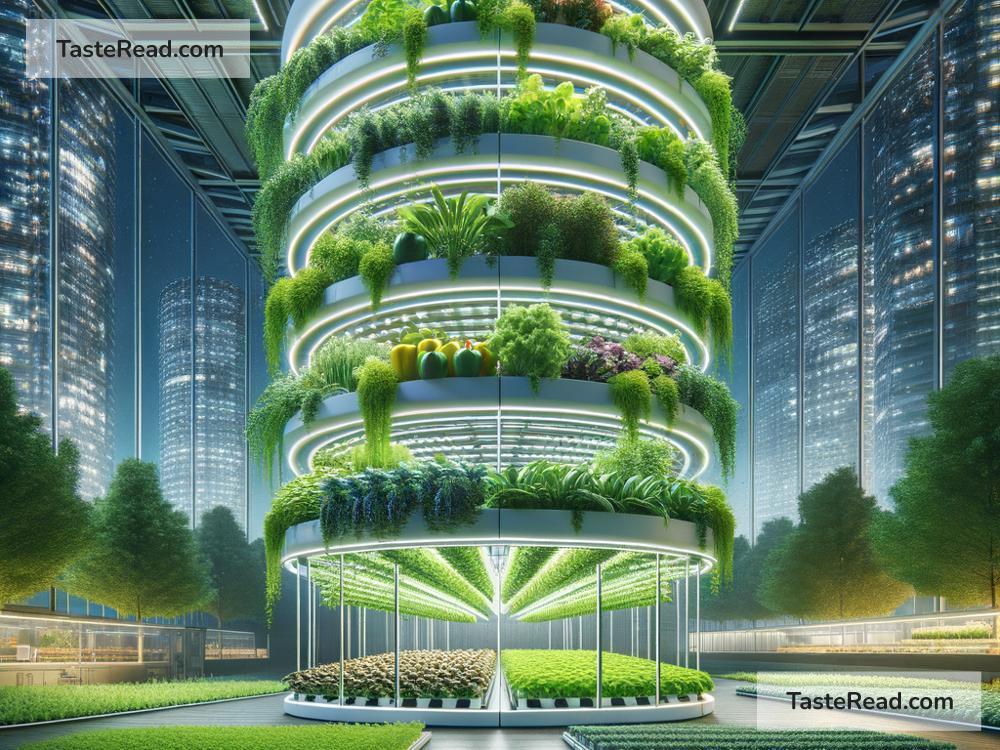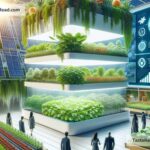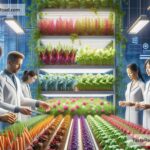The Future of Food and Regenerative Systems: Building a Sustainable World
Imagine a future where the food we eat not only nourishes our bodies but also helps the planet thrive. A future where farming is done in a way that restores soil health, reduces pollution, and works in harmony with nature. This vision is becoming possible thanks to regenerative systems—a new way of thinking about food and agriculture that looks beyond short-term gains and focuses on long-term solutions.
Why Change is Needed
Right now, many parts of the world rely on farming methods that harm the environment. In traditional farming, fertilizers, pesticides, and heavy machinery often degrade soil health, kill beneficial insects, and release greenhouse gases into the atmosphere. Over time, this makes it harder to grow food and contributes to problems like climate change and biodiversity loss.
At the same time, people face challenges like hunger and poor nutrition. Our current food systems often prioritize quantity over quality, resulting in unhealthy diets. Plus, food production often wastes resources like water, energy, and land. If we keep doing things the same way, future generations may struggle to produce enough food, especially as the global population grows.
That’s where regenerative systems come in. They’re designed to make food production better for people and for the planet.
What Are Regenerative Systems?
Regenerative systems are farming, food, and environmental practices that focus on restoring and improving ecosystems rather than depleting them. Unlike conventional methods that may harm soil, water, and wildlife, regenerative systems aim to leave the land in better shape than we found it.
Key principles of regenerative systems include:
-
Soil Health: Healthy soil is the foundation of sustainable farming. Regenerative practices like composting, cover cropping, and crop rotation can help enrich the soil, making it fertile for future farming. Healthy soil also traps carbon dioxide, helping to combat climate change.
-
Biodiversity: Creating diverse ecosystems is vital. Regenerative systems encourage planting different crops and protecting natural habitats, which helps support bees, birds, and other wildlife.
-
Water Conservation: By reducing waste and improving water management, regenerative systems ensure that farming doesn’t drain rivers and lakes dry. Methods like rainwater harvesting and precision irrigation help save water.
-
Circular Economy: Regenerative systems rethink waste. For example, food scraps can be turned into compost rather than thrown away. Livestock manure can be used as natural fertilizer. The goal is to reuse resources instead of wasting them.
-
Community Well-being: Regenerative systems aren’t just about the environment; they’re also about people. These systems aim to create fair markets, support local farmers, and ensure everyone has access to nutritious food.
Real-World Examples
To understand how regenerative systems work, let’s look at a few examples:
-
Carbon Farming: Some farmers are adopting methods that store carbon in the soil, helping reduce greenhouse gases. Practices include planting deep-rooted crops and avoiding plowing, which releases carbon.
-
Agroforestry: This approach combines agriculture with trees. Farmers plant crops alongside trees and shrubs, which improves biodiversity and provides shade, wind protection, and better nutrient cycles for plants.
-
Seaweed Farming: On the ocean, regenerative systems are emerging too! Growing seaweed can improve marine ecosystems, absorb carbon dioxide, and reduce ocean pollution while providing a healthy food source for humans.
The Role of Technology
Technology plays a key role in shaping the future of food. Innovations like vertical farming—growing crops indoors in stacked layers—can save space and reduce the need for chemical fertilizers. Drones are helping farmers monitor fields and manage resources more efficiently. Sensors can detect when plants need water or nutrients, cutting down on waste.
In the future, we might also see lab-grown meat becoming a sustainable alternative to traditional livestock farming. Scientists are already creating meat in labs using cells instead of raising animals. This could reduce the environmental impact of meat production while still meeting consumer demand.
Benefits of Regenerative Systems
By embracing regenerative practices, we can solve several problems at once:
-
Fight Climate Change: Regenerative methods store carbon in soil and plants, reducing greenhouse gases.
-
Feed More People: Healthy soil and efficient practices make it easier to grow enough food.
-
Protect Wildlife: By creating habitats for animals and plants, regenerative systems support biodiversity.
-
Improve Nutrition: Crops grown in healthy soil are often more nutritious than those produced using chemical-heavy farming methods.
-
Build Resilience: Regenerative systems make farms more adaptable to challenges like droughts and floods.
Challenges to Overcome
Of course, transitioning to regenerative systems won’t be easy. Farmers may need help to learn new practices and invest in new tools. Governments, businesses, and communities will need to work together to support this shift. However, the benefits of these systems far outweigh the hurdles.
The Road Ahead
The future of food lies in developing holistic, regenerative systems that balance the needs of people and the planet. With advances in technology, smart policies, and community support, we can create a sustainable world where everyone has access to nutritious food.
Every small choice we make—whether it’s supporting local farmers, cutting food waste, or learning more about how our food is produced—adds to this brighter future. When we embrace regenerative systems, we’re not just growing food; we’re healing the Earth.
The journey ahead may require effort, but it’s one worth taking. Together, we have the chance to build a food system that works for everyone, ensuring health and abundance for generations to come. Let’s start today!


